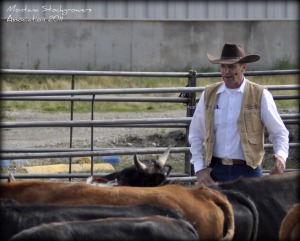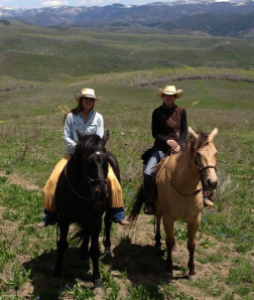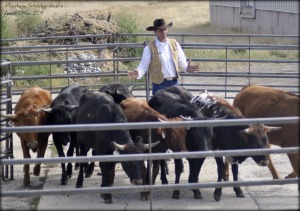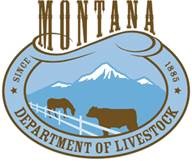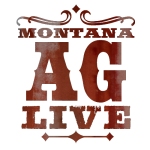Camron “Cam” Cooper of Twin Bridges, Montana had her sights set on running a cattle ranch and about twenty years ago, she was able to accomplish that dream. Cam owns the Talon Ranch which is both a commercial and registered seedstock Angus operation. Cam’s heart reaches far beyond the borders of Montana. She is leaving her entire estate to the Angus Foundation and established a scholarship program to help the nation’s young cattle raisers. Today on the blog, we feature Cam…her work, her ranch, her generosity…

Camron “Cam” Cooper at home on the Talon Ranch
How long have you been involved in ranching?
I got started on my own about 20 years ago. I was a newcomer to the cattle business. In 1996, I bought my first commercial cattle and a few registered Angus which I kept adding to. Then in 2003, I sold all the commercial cows and became completely a registered Angus seedstock operation.
Why did you want to get involved in the cattle business?
It’s in my genetics. I had a cowboy granddad in Missouri, and in the 1920s, he moved out to California. I was born there in 1939. When I was 4-years-old, he bought me my first horse and I was hooked. Many years later, I was looking for a good spot to retire and In 1994, I moved to Montana.
Why did you chose to settle in Montana?
I visited Montana several times for business and had always loved those trips. The state just seemed opened and away from it all. I knew this is where I wanted to retire.
It seems like there is good ranch community support in your area. Do you agree?
I didn’t know very much when I first got into the business, but luckily my neighbors and those involved in the Angus breed helped me quite a bit. They are all very passionate about Angus and its benefits for the national cowherd. I work with the Sitz Angus Ranch in Dillon…they’ve been terrific and a huge support system.
 What are some of things you’ve learned over the years?
What are some of things you’ve learned over the years?
There is a great need for flexibility in the cattle business. You can have the best plan in the world…the best breeding genetics, but sometimes, it just doesn’t turn out like you wanted. Instead of beating your head against the fence post, you better shift gears. There are a number of things you have no control over so learn to deal with it.
Do you have any advice for young people in the ranching business?
Every situation is different and you can’t generalize. Get experience first and define your goals and objectives. But be ready to use that flexibility. You can’t just do it by the seat your pants.
What are your favorite days on the ranch?
I love the calving season…especially at the beginning. It’s one of the most rewarding things. But the thing is, the reward comes from all the hard work you put into the rest of the ranch year…everything from the preparation of the breeding season, (making sure your genetics are set up properly for the herd because it ends up being like a chess game when selecting genetics) to the actual breeding season…and later, the calving season. It’s labor intensive and a 24-hour a day job. We not only have to monitor the calves, but also constantly check the health of the momma cows…often times in drastically cold weather.
What else would you like our readers to know about?
It’s important for ranchers to stand up for what they’re doing. We raise cattle properly…from animal care to land stewardship. We have to do our best, because if not, we’re out of business. We also want to create the most satisfactory experience for the beef consumer we can. It takes time, money and great effort.
 Tell us more about the future of your ranch and your scholarship program.
Tell us more about the future of your ranch and your scholarship program.
My estate in entirety is going to be left to the Angus Foundation to provide scholarships for students interested in animal husbandry and cattle business operations. The Talon Ranch Scholarship has been up and running for 5 years. It just is so gratifying to provide this money to students who may not have had another means to get an opportunity. It warms my heart.
A word of thanks from Milford Jenkins, Angus Foundation president:
“Cam’s undergraduate and graduate scholarships through her Angus/Talon Youth Educational Learning Program Endowment Fund in the Angus Foundation have literally transformed the lives of the outstanding and deserving youth selected to be the recipients of her prestigious scholarships. A consummate visionary, Cam has a keen understanding and appreciation for the importance of investing today in the next generation who will be tomorrow’s leaders of our beef cattle and agricultural related industries, communities, schools, states and nation. The Angus Foundation, Angus/Talon scholarship recipients, their families and those that follow in the years to come whose lives will forever be enriched by Cam’s selfless philanthropy, will always owe her a huge debt of gratitude. She truly is an inspiration to all of us!”
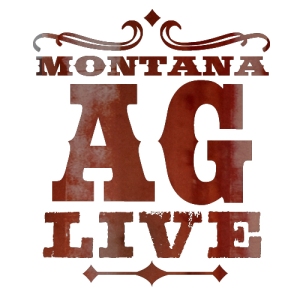 Gary Brester of the College of Ag has shared some of his research findings with Ag Live. To learn more about PBS’ Montana Ag Live program, visit their website. Submit your questions to be answered by MSU experts in future columns by emailing [email protected].
Gary Brester of the College of Ag has shared some of his research findings with Ag Live. To learn more about PBS’ Montana Ag Live program, visit their website. Submit your questions to be answered by MSU experts in future columns by emailing [email protected].








